The Plane of Shadow is a dangerous place. Full of darkness and death, simply being within it for any time is enough to physically and mentally exhaust even the hardiest of folk. Only the most sadistic and malicious DMs send a group of low-level adventurers to the Shadowfell.
So anyway, when I sent a group of low-level adventurers to the Shadowfell, I was spoiled for choice regarding threats. Anything that existed there was enough to cause serious harm to the party, but why stop there?
Why not go even further, and take an unholy creature from the plane beyond? A true monster from the Negative Energy plane: a Nightwalker.
Once the party got wind of this, they were understandably concerned. A Nightwalker isn’t a creature to be taken lightly, even by high-level groups. It seemed like an impossible task for a group of players barely into level 5. It was. I knew this.
I’m not entirely heartless, so I created a version of the Nightwalker than was much weaker than it appears in Mordenkainen’s Tome of Foes.
I also allowed them to (honest to God) nuke it with an orbital laser powered by demonic magic before fighting it. Despite this, the fight was long, bloody, and brutal. They barely survived, even with the deck stacked as much as I could.
It turns out you can only weaken a Nightwalker so much. They are, indeed, terrifying agents of death.
Welcome to a Nightwalker 5e Guide.
Bottom Line, Up Front
Of all the undead monstrosities in 5e, none is more dangerous than the Nightshades. Of the Nightshades, there are none more brutal, lethal, and terrifying than the Nightwalker: a giant undead creature with passive Area of Effect (AOE) damage, surprisingly good mobility, and remarkable attack range.
While its low AC makes it easy to hit, its massive amount of hit points and numerous resistances and invulnerabilities make it extremely difficult to kill. On top of all this, it also boasts the ability to reduce hit point maximums, paralyze party members, and permanently kill anyone that it reduces to 0 hit points.
Description
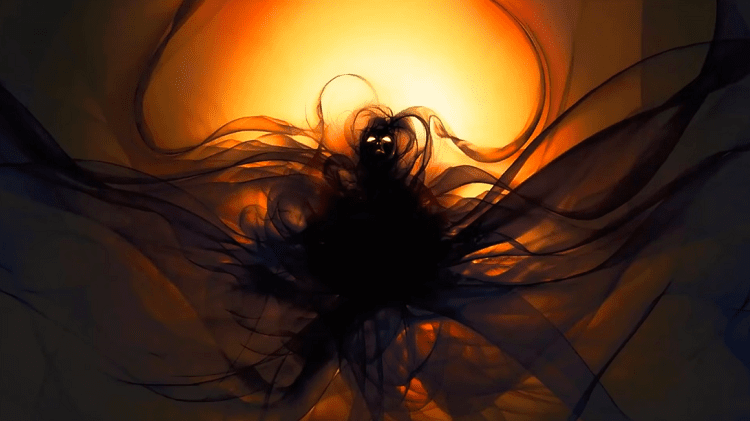
The Nightwalker is a 20ft tall behemoth: a humanoid shape, complete with spiral horns and long claws, comprised entirely of shadow. It is undead, requiring no food, water, or sleep.
It has no wants or needs, answers to nobody and nothing, and has no survival instincts of its own, never fleeing no matter the odds or the damage it has taken. It simply exists to destroy life and ceaseless seeks to snuff out the living.
It silently glides, making no sound and leaving no trace, across the landscape. In its wake, one will find nothing but death.
Origins
Though the Nightwalker is most commonly found in the Shadowfell, this isn’t where they originate. To see that, one must venture to the Negative Energy plane, which is only accessible from the Shadowfell.
Few find their way there, primarily due to its reputation as one of the most inhospitable places imaginable. Indeed, another name for the Negative Energy plane is the “Plane of Death,” which is about as on the nose as you can get.
Despite this, a few venture there to tap into its incredible magical energy. Most are destroyed instantly, but a select few manage to survive.
Be it by the protection provided by the Gods, magical wards, or just a superbly strong will holding together their corporeal form, these individuals succeed in staying alive, only to find themselves eternally trapped within the plane.
As they cross over into the Plane of Death, they release a creature from it to take their place in the Shadowfell: the Nightwalker. Convincing the Nightwalker back into the rift is a dangerous and challenging task requiring vast numbers of living creatures as bait.
Nevertheless, they are imprisoned until such a time when this horror is brought back to its original domain alive so that they might trade places once more.
Important Stats
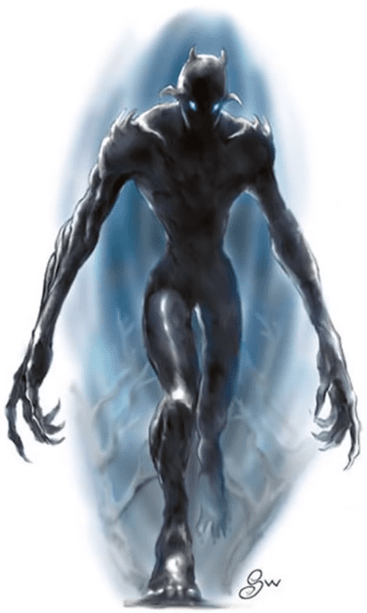
General Information
- Challenge Rating (CR): 20
- Size: Huge
- Type: Undead
- Alignment: Chaotic Evil
- Languages: None
A Nightwalker is a creature that will quickly bring ruin to all but the most high-level adventurers (15th-20th level). A CR this high (only 1 underneath a Lich) isn’t to be underestimated, though a group of experienced players may be able to survive an encounter at earlier levels.
They’re often used as “Big Bad Evil Guys” (BBEG) in campaigns due to their power, stature, and reputation as enigmatic engines of enervation.
Defense
- Armor Class (AC): 14
- Hit Points: 297 (22d12+154)
The Nightwalker’s AC is its weakness here, shockingly low for a creature of its CR. Make no mistake, though: It can afford this flaw. Its massive hit points and damage resistances/immunities make it difficult to damage, even when hit. The Nightwalker doesn’t avoid damage: it simply shrugs it off.
Speed
- Walk: 40ft.
- Fly: 40ft.
Bright adventures may try to keep the Nightwalker at range to avoid damage and whittle its health down from afar. Unfortunately, this is unlikely to work.
With a higher than average speed and the ability to fly, the Nightwalker makes for a surprisingly mobile creature despite its colossal size. Its long-range attacks and passive damage aura combine well, making it difficult to escape and evade the Nightwalker’s deadly reach.
- Ability Scores
- Strength: 22 (+6)
- Dexterity: 19 (+4)
- Constitution: 24 (+7)
- Intelligence: 6 (-2)
- Wisdom: 9 (-1)
- Charisma: 8 (-1)
These are the ability scores of a brute, no doubt. Its charisma score won’t be winning any beauty contests; its low Intelligence and Wisdom scores show nothing much going on behind the eyes. Despite that, its extreme strength, dexterity, and constitution scores benefit it significantly in battle.
Many spells rely on saving throws based on these stats, so spellcasters must be clever with their attack choices to be effective. The Fireball spell has legendary meme status for its effectiveness in almost all encounters.
Still, against a Nightwalker’s high Dexterity and fire resistance, its damage will likely end up being quartered, barely touching its massive health pool.
Saving Throws
- Constitution: +13
A constitution saving throw this high is insanely strong. Any spell or ability that relies on this is bound to fail against the Nightwalker.
Vulnerabilities, Resistances, and Immunities
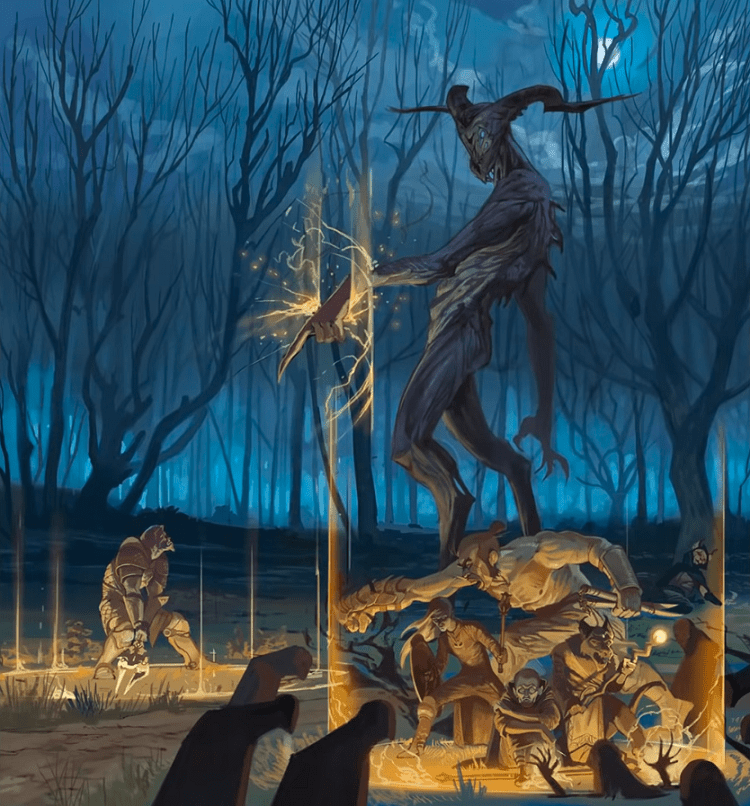
- Damage Vulnerabilities: None
- Damage Resistances: Acid. Cold. Fire. Lightning. Thunder. Bludgeoning, piercing, and slashing from non-magical attacks.
- Damage Immunities: Necrotic. Poison.
- Condition Immunities: Exhaustion. Frightened. Grapple. Paralyzed. Petrified. Poisoned. Prone. Restrained.
A considerable amount of resistances and immunities, but another thing that stands out about the Nightwalker is the lack of vulnerabilities. Usually, undead creatures are vulnerable to radiant damage.
Not so with the Nightwalker, such a condensed collection of negative energy that even divinity struggles to make a mark. Even so, remembering the only options for dealing total damage to this creature is worthwhile: radiant, force, and psychic. Any magical weapon will also do the job.
Senses
- Superior Darkvision: 120ft.
- Passive Perception: 9
The Nightwalker’s poor passive perception makes stealth somewhat viable against it, although darkness won’t help you hide much, and blocking line of sight might be trickier against a flying foe.
Actions
Multiattack
The Nightwalker attacks twice each round, equating to either two uses of Enervating Focus or one coupled with a single use of Finger of Doom. Either way, you’re looking at some significant damage output.
Enervating Focus
The Nightwalker’s primary method of attack. A massive +12 to hit and a long reach of 15 ft allows it to effectively engage combatants from a ludicrous distance, with more range than any other melee weapon attack in the entire game.
It deals 5d8+6 necrotic damage on a hit, but that isn’t where the problems end for the target. They must also succeed on a hefty constitution saving throw of DC 21.
If it fails, its hit point maximum is reduced by the same amount as the damage they took, making this damage permanent until they receive a Greater Restoration spell or finish a long rest. In a battle of attrition, taking damage you can’t heal from makes for a perilous encounter.
Finger of Doom
This attack is bonkers. This thing hits from 300ft away, which is just absurd. On a standard grid, that’s 60 squares away! Needless to say, if the Nightwalker can see you, it can target you with this. This wouldn’t be so bad if it weren’t also a horrifying attack.
The target is forced to take a Wisdom saving throw and must beat DC 21. On a failed save, they suffer 4d12 necrotic damage and become both frightened and paralyzed until the end of the Nightwalker’s next turn.
The damage isn’t too hard for the average high-level adventurer to tank, but the conditions are what make this ability genuinely frightening. Paralyzed characters can’t move, speak or take any actions. What’s more, any attack against them has the advantage, and any attack made from 5ft away becomes an automatic critical hit if it lands.
This means that a Nightwalker can paralyze someone 40ft, move over to them, and hit them with a second attack that has the advantage, causes double damage, and reduces their maximum hit points by the same amount, all in one turn.
A squishy spellcaster can find themselves at death’s door in the blink of an eye if caught out by this attack.
Fortunately, this attack has a significant cooldown, recharging only on a 6. Furthermore, if you succeed in the save, you don’t take any damage or adverse effects, and you can’t be targeted by it again until 24 hours have elapsed.
This makes it a one-shot ability, for the most part. If you get lucky or have a high constitution modifier, you have little to fear from this ability. However, If it hits you, expect a whole world of hurt to come your way.
Passive Effects
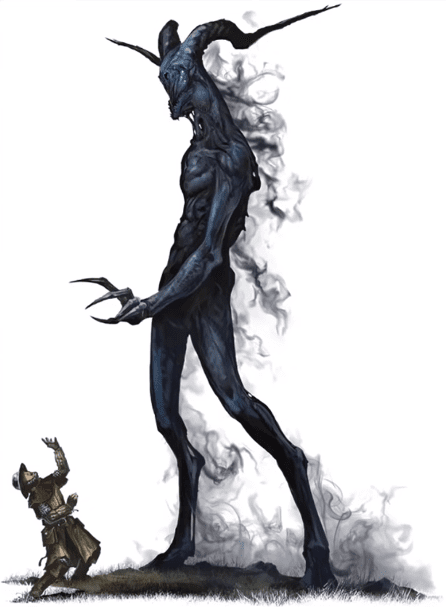
Annihilating Aura
The Nightwalker boasts an aura that spans 30ft around it in all directions. Those that end their turn in it will be forced to make a Constitution saving throw (DC 21) or take 4d6 necrotic damage.
This isn’t a lot of damage, especially for such a high-level encounter, but it doesn’t require an action on the Nightwalker’s part, so it’s essentially free damage. What’s more, it also grants the nightwalker advantage on attack rolls against anyone that fails the save until the start of their next turn, making its other attacks much more likely to land.
Undead are immune to this aura, meaning that the DM can (and usually will) chaperone the Nightwalker with other undead creatures without worrying about them being destroyed by this proximity effect.
Life Eater
A simple effect, but one that commands respect. If you’re reduced to 0 hit points by a Nightwalker, you die immediately and permanently. No death saving throws – no magical revival. Your soul is destroyed, completely and utterly. The only thing that can bring you back is a wish spell.
This serves as a stakes raiser, and you better believe that a party privy to knowledge about this ability will think twice before taking it on. Risky plays are a gamble at the best of times, but it becomes a literal death sentence against a creature that can erase your existence without appeal.
Bodak
Though it isn’t mentioned in the creature’s stat block, Nightwalkers have another ability that often gets overlooked. Any creature destroyed by the corrupting touch of a Nightwalker turns into a Bodak: a soulless undead thrall that, forgetting any details of its previous life, will defend its master to the last.
Their grey muscular bodies are surprisingly strong, and their eyes are milky-white and empty. Those that gaze into a Bodak’s eyes will be starkly reminded of their mortality as they are confronted with a glimpse of their impending death.
Here’s a brief rundown of their stat block:
- Challenge Rating (CR): 6
- Size: Medium
- Type: Undead
- Alignment: Chaotic Evil
- Languages: Abyssal. The languages it knew in life.
- Armor Class (AC): 15
- Hit Points: 58 (9d8+18)
- Speed: Walk – 30ft.
- Strength: 15 (+2)
- Dexterity: 16 (+3)
- Constitution: 15 (+2)
- Intelligence: 7 (-2)
- Wisdom: 12 (+1)
- Charisma: 12 (+1)
- Damage Vulnerabilities: None.
- Damage Resistances: Cold. Fire. Necrotic. Bludgeoning, piercing, and slashing from non-magical attacks.
- Damage Immunities: Lightning. Poison.
- Condition Immunities: Charmed. Frightened. Poisoned.
- Superior Darkvision: 120ft.
- Passive Perception: 14
Aura of Annihilation
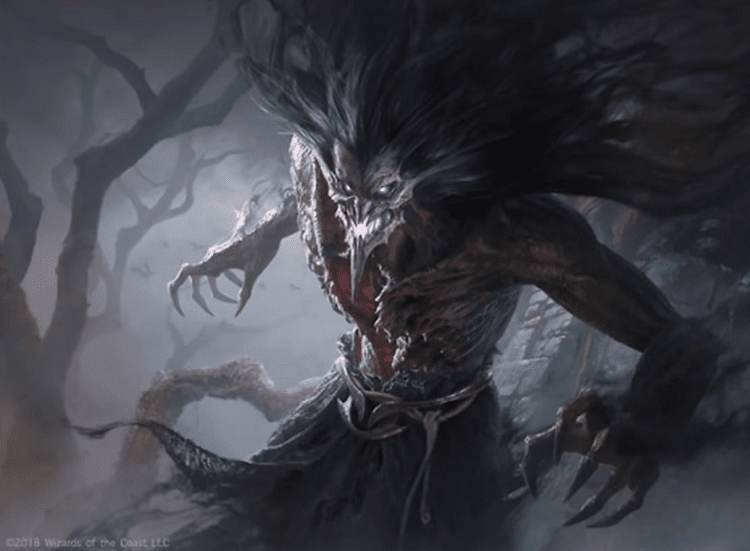
This aura is similar to the Nightwalker’s but significantly weaker. It deals 5 necrotic damage to any creature that ends its turn within 30ft of the Bodak.
Death Gaze
When a creature can see the Bodak’s eyes and starts its turn within 30 feet of it, they’re forced to make a DC 13 Constitution saving throw. On a failed save, it takes 3d10 psychic damage.
If the saving throw fails by 5 or more, the creature is instantly reduced to 0 hit points, though immunity to the frightened condition negates this effect.
This ability is made a little fairer by allowing the target the chance to avert its eyes to avoid it, provided they haven’t been surprised. However, If they choose to do this, they must suffer disadvantage on all attack rolls they make against the Bodak.
Sunlight Hypersensitivity
The Bodak takes 5 radiant damage when starting its turn in sunlight. Furthermore, it suffers disadvantage on attack rolls and ability checks while in sunlight.
Similar Creatures
The Nightwalker is part of a subset of undead creatures known as Nightshades. While the Nightwalker is arguably the most powerful of these, the others are worth considering.
As a DM, you can use one of these creatures in place of a Nightwalker for parties of a lower level. For a player, remember that these creatures are often found together. If you encounter one, be prepared for the others.
Nighthaunt
The weakest and smallest Nightshade, the Nighthaunt, is more of a nuisance than anything. With their hazy, gargoyle-like appearance and their predisposition to hang around temples and graveyards, it can be easy to surprise a party with a group of these.
Their spell-like abilities, such as Invisibility and Darkness, make matters worse, boosting their stealth and ambush capabilities.
Nightwing
Coming in at CR 14, the bat-like Nightwing has much in common with the Nighthaunt, a flying creature of purest shadow with excellent stealth abilities.
However, the Nightwing has a lot more going for it regarding magical skills, being able to boost its attack rate with liberal uses of the Haste spell. It can also drain magic out of objects with a simple touch, a devastating ability for your party’s precious items.
Nightcrawler
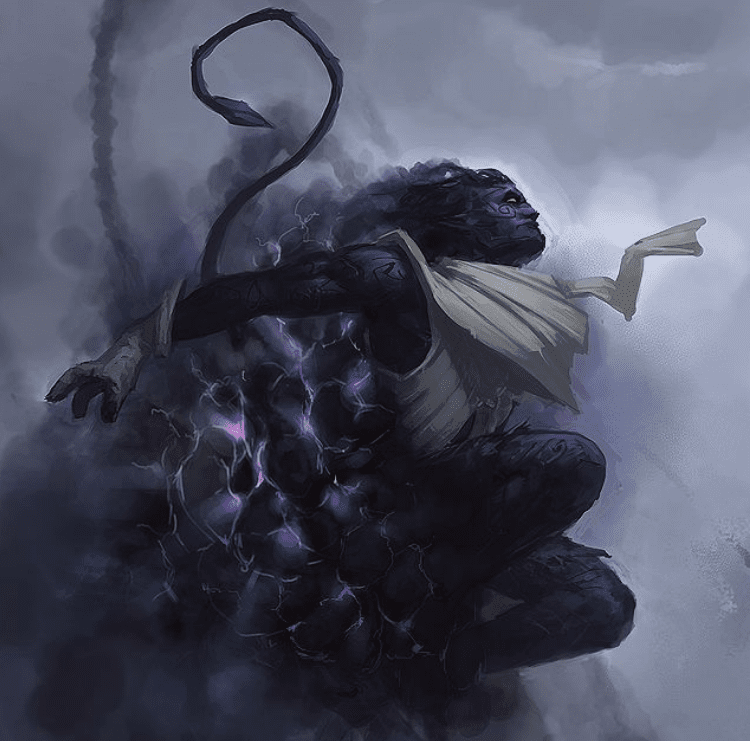
The Nightcrawler is essentially an undead Purple Worm. Instead of poison, it relies on necrotic damage. Instead of purple, it’s black. Otherwise, it operates just as you would expect, albeit with the addition of spell-like abilities and summons.
Lesser Nightwalker
If you’re a DM and your heart is set on using a Nightwalker, but you’re unsure if your party is at a level required to take one on successfully, consider using this stat block for a slimmed-down version that still carries the spirit (pun very much intended) of the original.
This is the same creature I used for my party of level 5 characters I locked within the Shadowfell. Although they were experienced players, this presented a significant enough challenge without becoming unfair.
- Challenge Rating (CR): 12
- Size: Medium
- Type: Undead
- Alignment: Chaotic Evil
- Languages: None
- Armor Class (AC): 14
- Hit Points: 62 (10d10+12)
- Speed: Walk – 30ft. Fly – 30ft.
- Strength: 16 (+3)
- Dexterity: 18 (+4)
- Constitution: 20 (+5)
- Intelligence: 6 (-2)
- Wisdom: 8 (-1)
- Charisma: 6 (-2)
- Saving Throws: Constitution +7
- Damage Vulnerabilities: Radiant
- Damage Resistances: Acid. Cold. Poison. Bludgeoning, piercing, and slashing from non-magical attacks.
- Damage Immunities: Necrotic.
- Condition Immunities: Exhaustion. Frightened. Grapple. Paralyzed. Petrified. Poisoned. Prone. Restrained.
- Darkvision: 60ft.
- Passive Perception: 9
- Sunlight Hypersensitivity: The Lesser Nightwalker takes 1d6 radiant damage when starting its turn in sunlight. Furthermore, it suffers a disadvantage on attack rolls and ability checks while in sunlight.
- Multiattack: Unchanged
- Enervating Focus: Functions identically to the original ability, but with +9 to hit, a DC 15 Constitution saving throw, and 3d6 necrotic damage.
- Finger of Doom: Functions identically to the original ability, but with 120ft range, a DC 15 Wisdom saving throw, and 4d6 necrotic damage.
- Annihilating Aura: Functions identically to the original ability, but with a DC 15 Constitution saving throw and 2d6 necrotic damage.
- Life Eater: Unchanged.
FAQs
Question: What Book is the Nightwalker in?
Answer: The Nightwalker is found in Mordenkainen’s Tome of Foes on page 216.
Question: How Tall is a Nightwalker?
Answer: Though sizes can vary, they are usually around 20ft tall.
Question: What Causes Nightwalkers?
Answer: What creates Nightwalkers remains relatively unknown, as does most of the Negative Energy Plane where it originates. All that is known is that it is released from its native plane when another being crosses into it, trading places with them.
Question: What Happens when a Nightwalker Dies?
Answer: A nightwalker dissipates into a mist of shadow and disappears upon death, leaving no trace behind. The creature that released the Nightwalker by trading places with it is trapped within the Negative Energy Plane forever if the Nightwalker dies before being led back into its native plane of existence.
Question: How Do You Fight a Nightwalker?
Answer: As intimidating as the Nightwalker seems, it isn’t without some pretty glaring weaknesses. Chief amongst these is its low intelligence, wisdom, and charisma scores, which make it susceptible to certain control spells.
Spells like Command Undead and Control Undead are unlikely for the Nightwalker to resist due to its low charisma and intelligence scores and lack of immunity to being charmed. These spells are good choices, but Banishment is the real winner.
Not only will this allow you to end a fight with the Nightwalker immediately, but it will also send it back to the Negative Energy Plane, saving whichever hapless fool decided to set foot there and release the Nightwalker in the first place.
If spells aren’t your forte, the next best thing is a fighter or barbarian with a magic weapon and many, many hit points. If you’ve got a good constitution, many attacks a round, and a reliable way to get past the Nightwalker’s damage resistances, you can take one down before it does much lasting damage to the party.
Remember that a drawn-out fight isn’t in your interest, as the Nightwalker excels in wasting your resources and weakening you from repeated exposure to its debilitating effects.
If all else fails, make sure to have an escape plan. The Nightwalker is fast and incredibly mobile, but it’s dumb and not very observant. Use stealth to your advantage or spells that provide invisibility to escape if things look like they’re going badly.
Always keep its ability to kill you instantly in mind, and don’t utilize unnecessarily risky tactics if you can help it.
- Best DnD Character Builders Online - November 20, 2022
- The Best DnD 5e Character Builder Sheets - October 9, 2022
- Scimitar 5e Guide: Curved Swords - September 27, 2022

